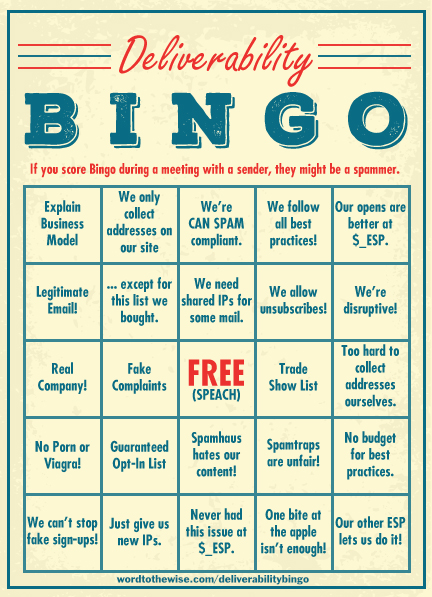Ugg, a spammer.
- laura
- March 21, 2016
- Best practices
I’ve written before about how there is some (I’m sure lovely) woman in the UK who has been connected to my email address. I get a lot of mail for her. Mostly spam. She doesn’t seem to be using the address, but I regularly get mail addressed to MRS. LAURA CORBISHLEY (all caps, always). Typically these messages are advertising various UK stores and products. Sometimes they’re mortgage offers. A few have been sweepstakes only open to UK residents.
I generally forward these spams off to various blocklists with the note it’s my “UK spamtrap” and they take whatever actions seem appropriate to them. Today, though, I got my first US spam to Mrs. Laura Corbishly. From a Yesmail customer called sanuk.com. I’m getting a website error (they get smacked for spamming already?) but a little research tells me this is shoe company that owns a bunch of brands, including Ugg.
Today, though, I got my first US spam to Mrs. Laura Corbishly. From a Yesmail customer called sanuk.com. I’m getting a website error (they get smacked for spamming already?) but a little research tells me this is shoe company that owns a bunch of brands, including Ugg.
Yes, Ugg a Spammer. They even even have a disclaimer at the bottom of the email telling me they’re a spammer!
Not so much, no. It appears, though, that the data brokers selling Mrs. Corbishley’s name connected to my email address have figured out that no one ever actually acts on any of their UK offers. So now they’re selling into the US market in hopes that they might entice a purchase?
On a purely nosy level, I’d love to know who was selling the address. First off, I’d love to know where they got this info in the first place. Secondly, what horrible database are they using that keeps name data in all caps? (When I get email to this trap I think they’re shouting at me, as if I’m the one who is wrong about my name. Maybe they think if they yell at me loud enough will I decide I really am the happy wife of Mr. Corbishley of Swindon, UK. )
I do tell clients that it’s useful to remind customers that they signed up for mail, especially if they haven’t mailed for a while. So I know not every email with a “you opted in” reminder is spam, but I only notice those things when I haven’t opted in. It’s something I mostly gloss over if I really did opt-in. I wonder if this is how other folks react to “you opted in” notices, too.
I do recommend the reminder be much more specific than “you opted in at our website.” Give the user a date, a time, something that isn’t just something any company can, and many do, make up.

